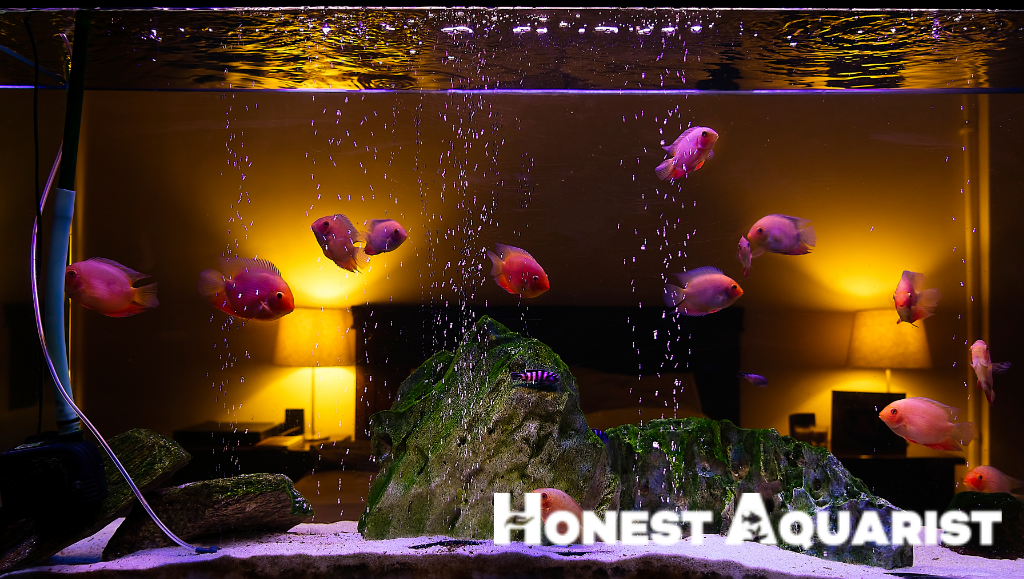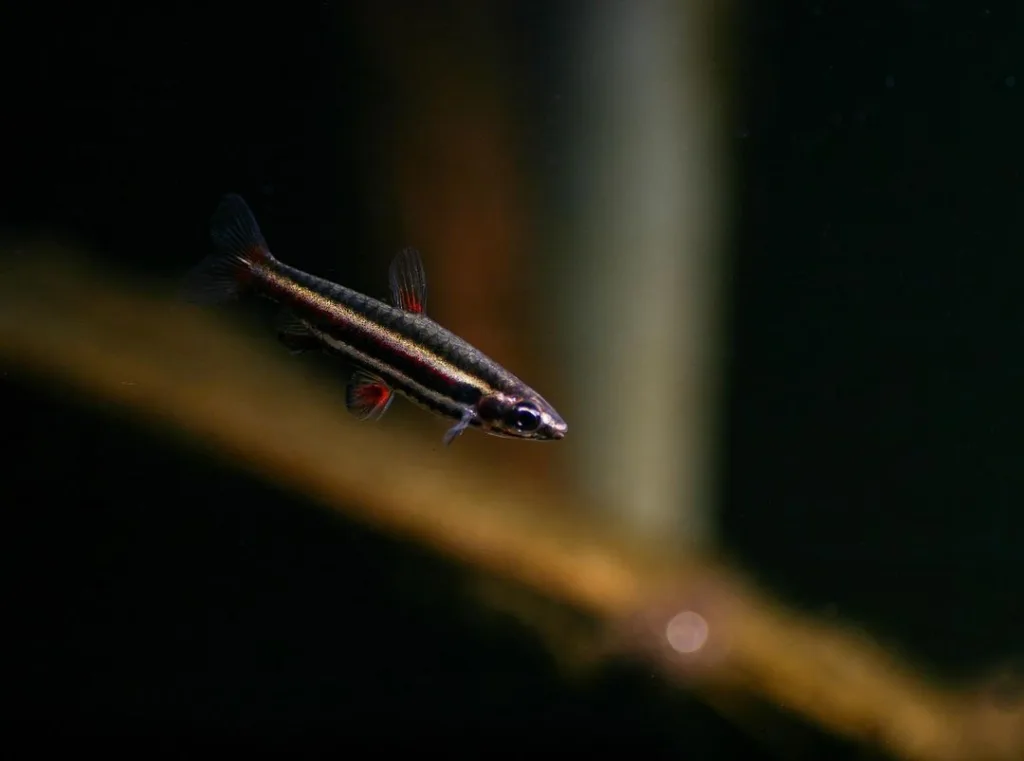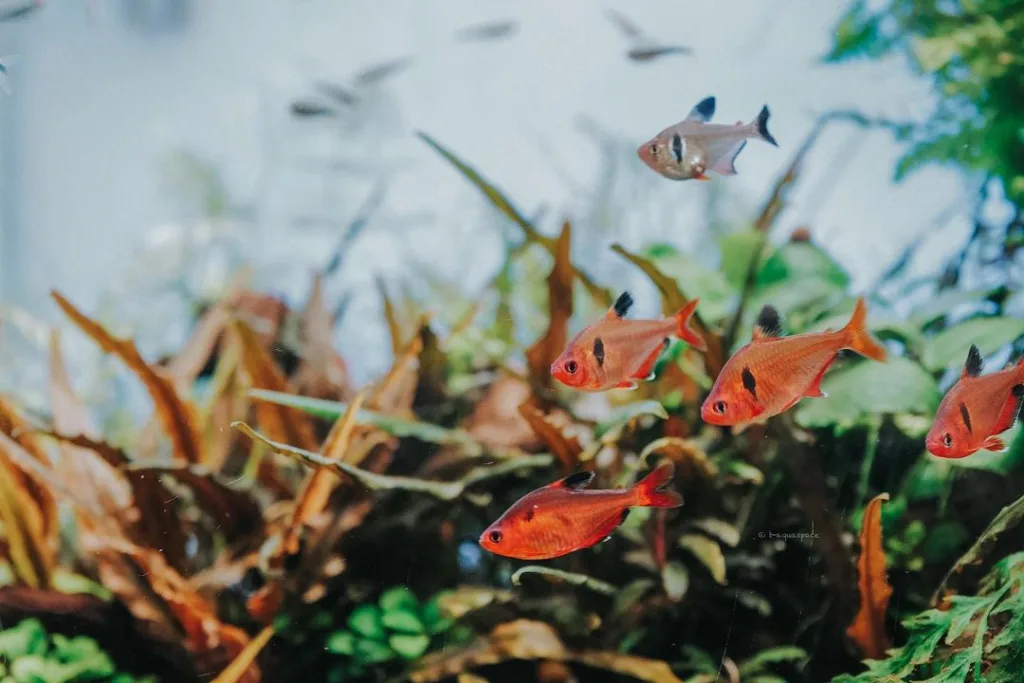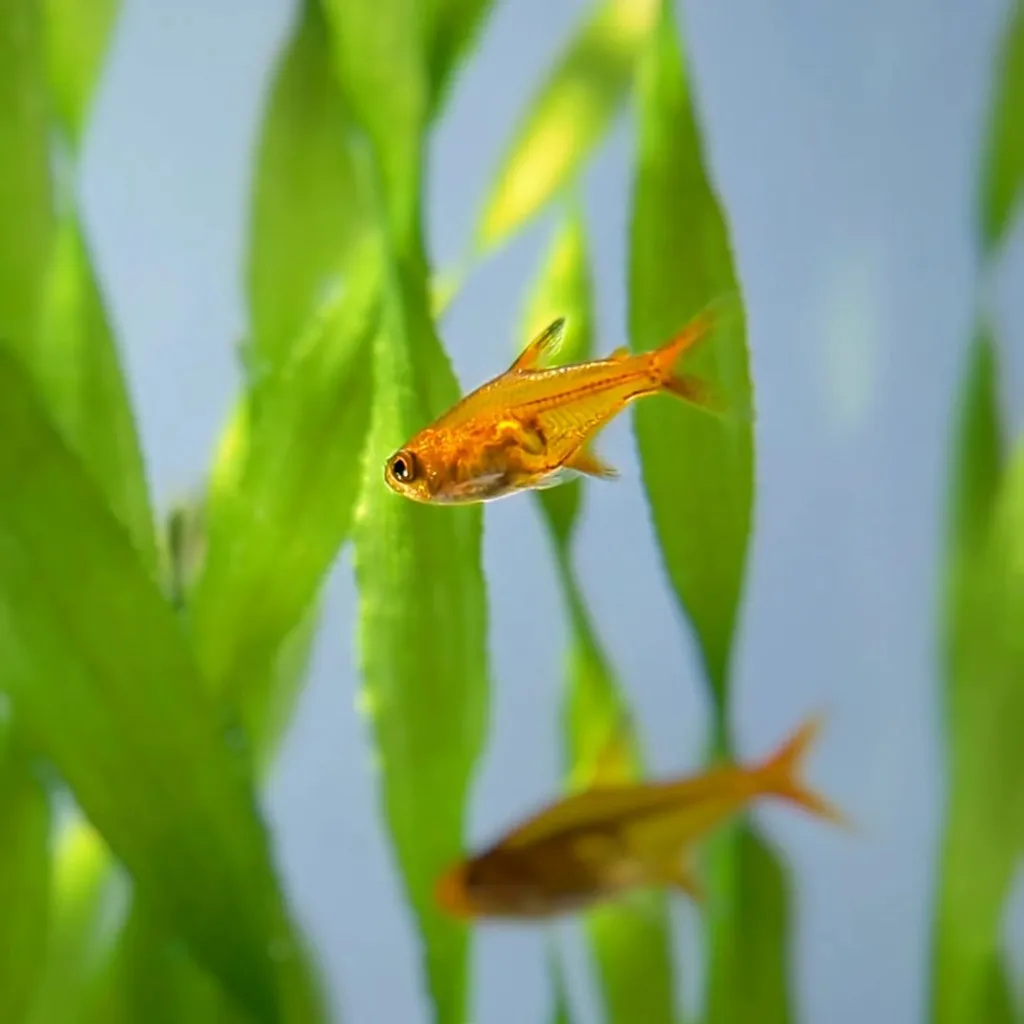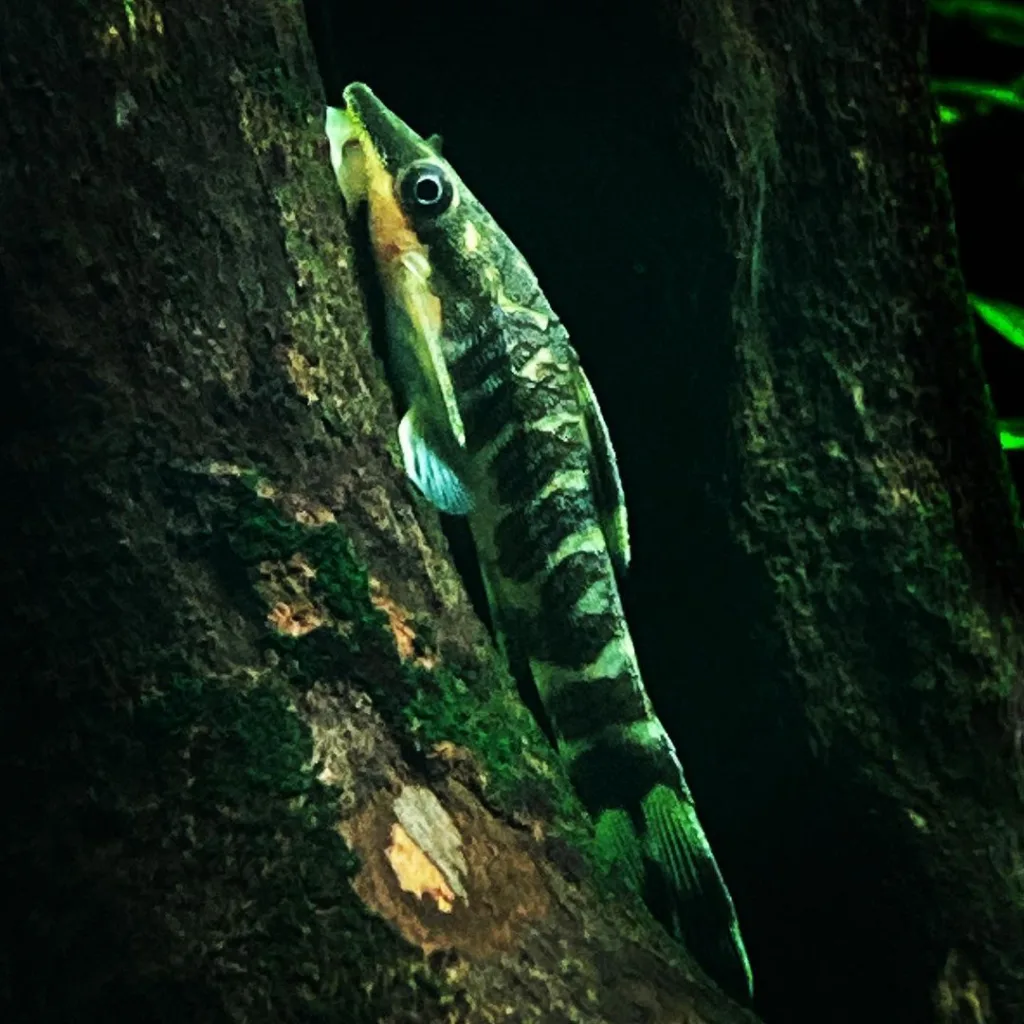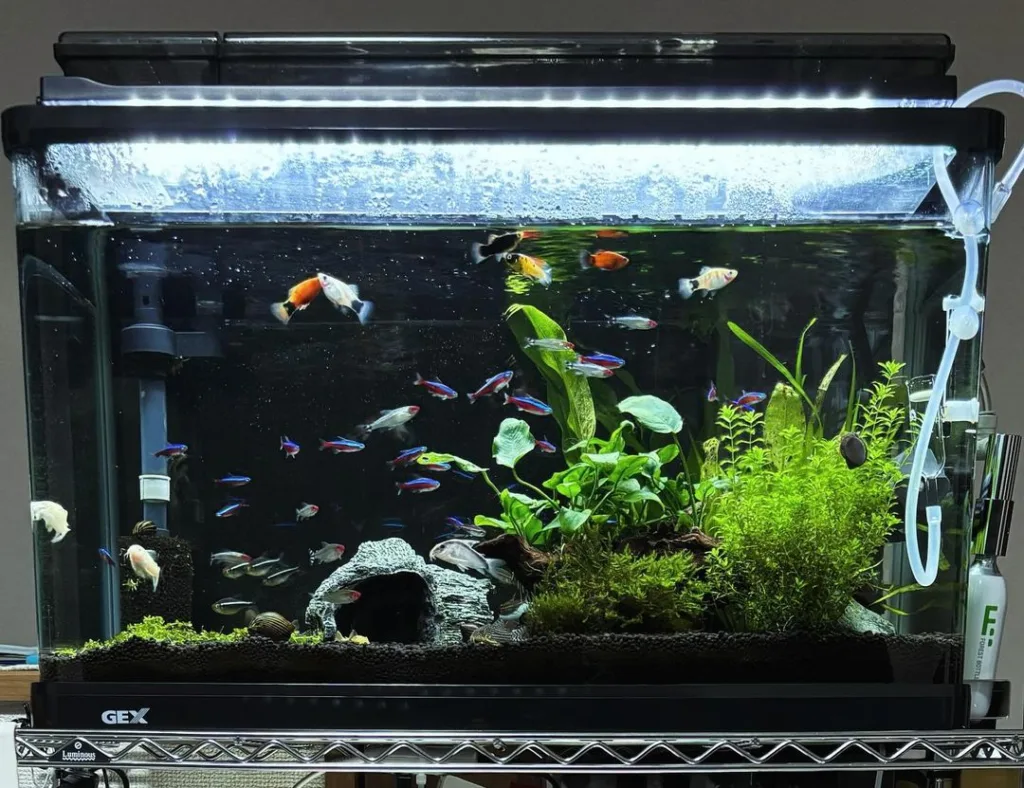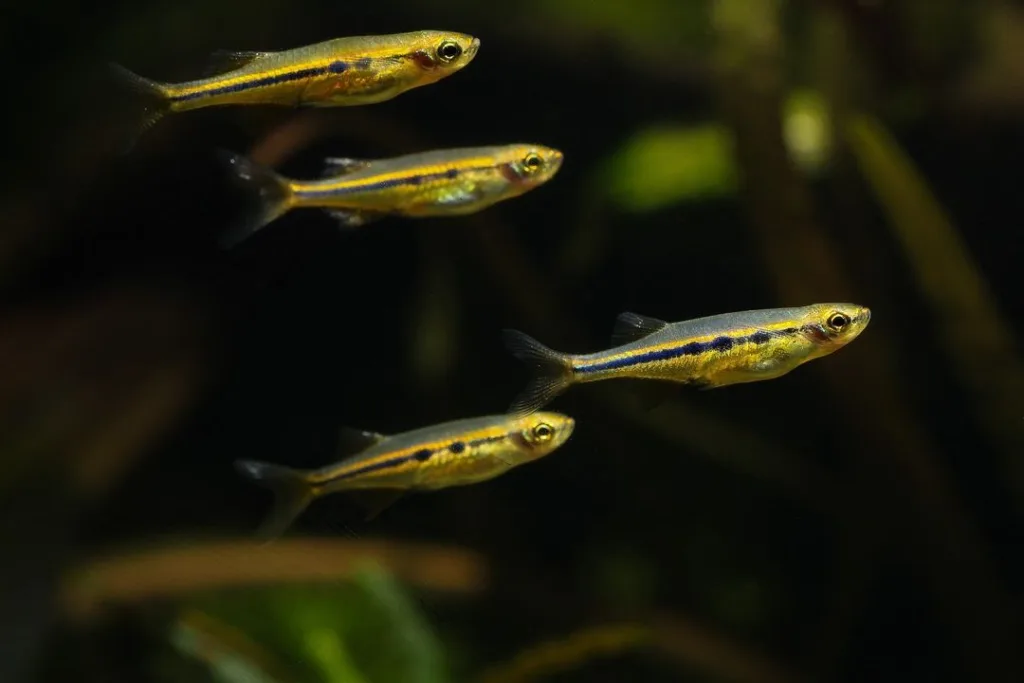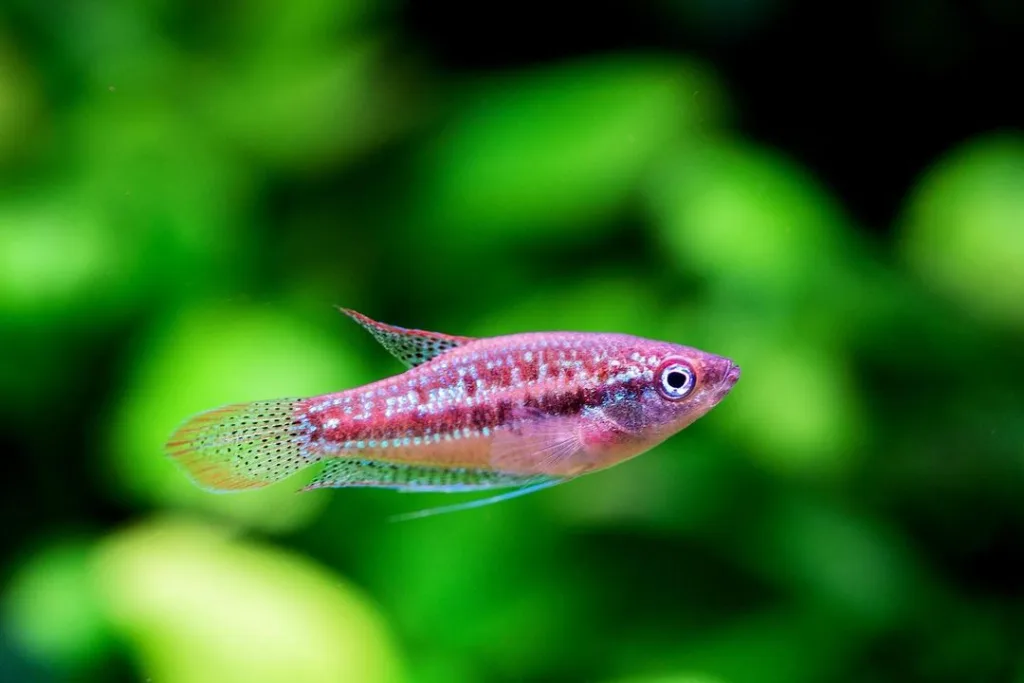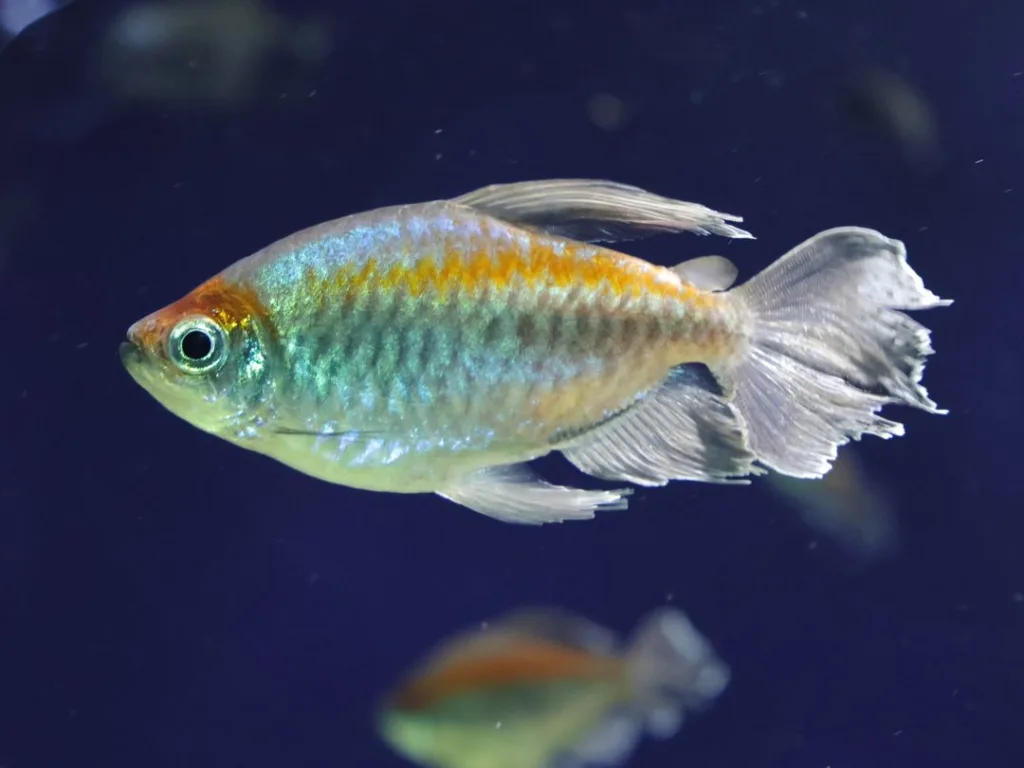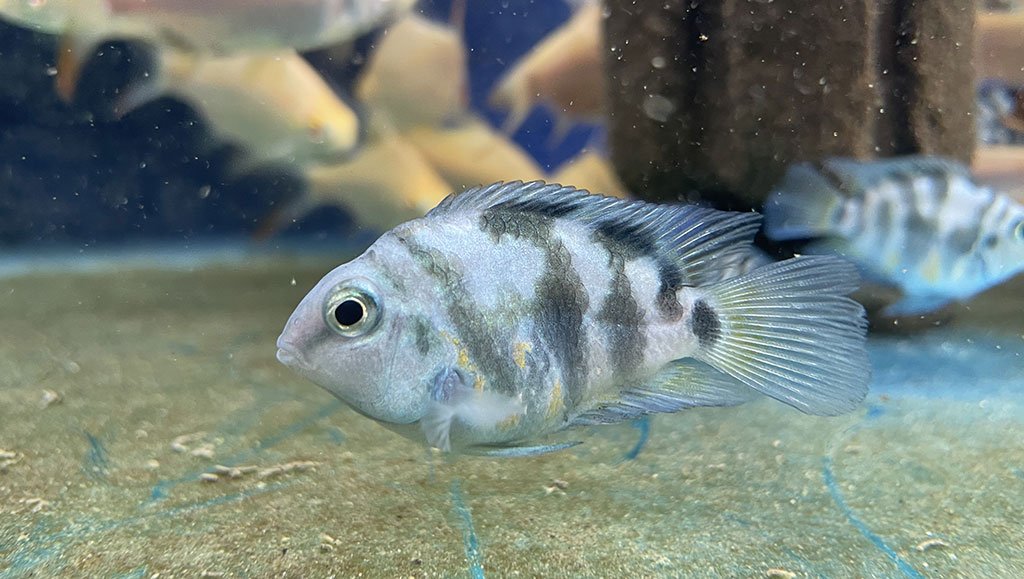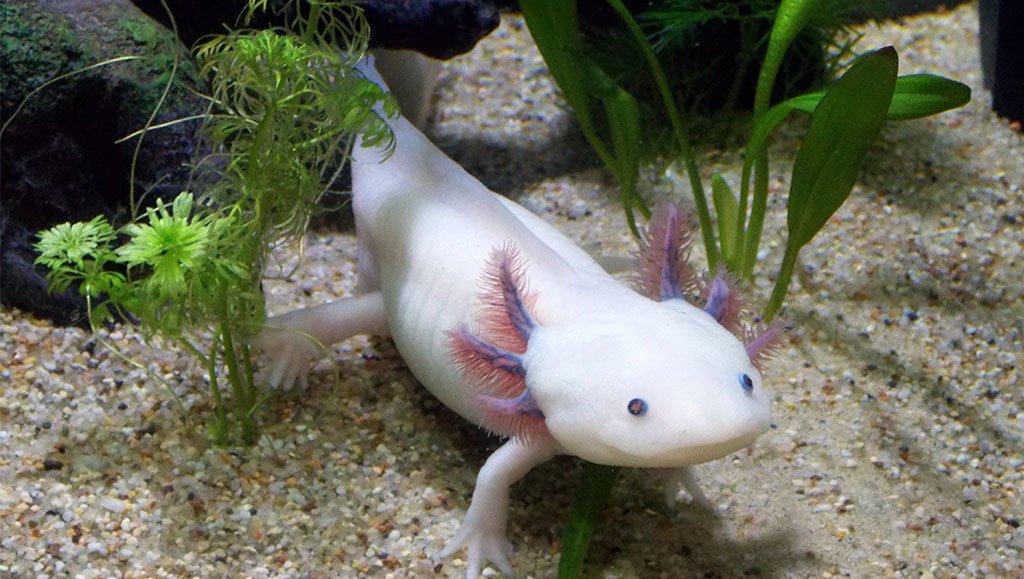Welcome to the fascinating world of Blackwater Aquarium Fish! In my years of aquarium keeping, I’ve come to appreciate the unique beauty and serene ambiance that blackwater habitats offer. This article is the culmination of my experiences and the knowledge I’ve gathered along the way.
You’re about to explore the enchanting ecosystem of blackwater aquariums, a realm that replicates the dark, tannin-rich waters found in nature. I’ll guide you through selecting the best fish for these conditions, understanding their care requirements, and how to recreate a naturalistic blackwater environment in your own aquarium.
Key Takeaways
From my personal journey into the captivating world of blackwater aquariums, here are some key insights and lessons I’ve learned along the way. I hope they serve you well as you embark on or continue your own blackwater adventure:
- Research is Fundamental: Before adding any fish or botanicals to your tank, thorough research is critical. Understand the specific needs and natural habitats of the blackwater species you wish to keep. This knowledge is crucial for replicating the appropriate environment in your aquarium.
- Patience Pays Off: Establishing a stable blackwater aquarium takes time. Don’t rush the process. Allow your tank to naturally evolve and mature, and you’ll be rewarded with a thriving ecosystem.
- Water Quality Cannot Be Overstated: Regular testing and maintenance of water parameters are paramount in a blackwater setup. Slight changes can have significant effects on the health of your fish and plants. Stay diligent with your water quality management practices.
- Natural Behavior is the Best Indicator of Success: One of the most rewarding aspects of keeping a blackwater aquarium is observing the natural behaviors of your fish. When your fish exhibit behaviors like spawning or territory guarding, it’s a clear sign that your efforts in replicating their natural habitat have been successful.
- Continuous Learning is Key: No matter how experienced you become, there’s always more to learn about blackwater ecosystems. Stay curious and open to new information and techniques that can help you improve your aquarium.
- Community Engagement Enriches the Hobby: Sharing experiences, challenges, and successes with fellow blackwater enthusiasts can provide valuable insights and encouragement. Don’t hesitate to engage with the community and learn from the collective knowledge and experiences.
Characteristics of Blackwater Fish
In my years of nurturing blackwater aquariums, I’ve observed various fascinating characteristics that define blackwater fish. Here’s what I’ve learned, presented through a blend of scientific insight and personal reflection.
Adaptations to Low pH and Soft Water Conditions
Blackwater fish possess remarkable adaptations that allow them to thrive in acidic and soft water conditions, mimicking their natural habitats in the wild. From my experience, these adaptations aren’t just about survival; they’re about thriving. The low pH levels, typically ranging between 4.0 and 6.5, can be daunting for many aquatic species. Yet, blackwater species have evolved to not only tolerate but prefer these conditions. Their internal physiological processes have adapted to efficiently absorb nutrients and minerals in such environments, a testament to nature’s ability to specialize and perfect.
Unique Coloration and Behavior in Blackwater Environments
One of the most visually striking aspects of maintaining a blackwater aquarium is the unique coloration and behavior of the fish it houses. The subdued lighting and darkened water beautifully accentuate the vibrant colors and patterns of blackwater fish. In my tanks, species like the Betta and Tetra display brighter colors and more dynamic social interactions compared to their behavior in clear water setups. This distinct coloration is not just for show; it plays a critical role in communication and mating within the dimly lit waters.
Origin and Distribution of Blackwater Fish Species
The geographic origins of blackwater fish are as diverse as the species themselves. They hail from freshwater systems across the world, where water flows through dense forests and peat swamps, leaching natural tannins and lowering the pH. My personal favorites include fish from the Amazon Basin, the Congo River, and the peat swamps of Southeast Asia. Understanding the origin of these species is paramount in replicating the natural conditions they are accustomed to and ensuring their well-being in an aquarium setting.
Diet and Feeding Practices in Blackwater Aquaria
From my firsthand experience, the dietary needs of blackwater fish can be quite specific, often reflecting their natural prey and foraging behaviors. Many blackwater fish species are specialized feeders, consuming a diet of small insects, larvae, and crustaceans in the wild. In the aquarium, replicating this diet with a variety of live, frozen, and prepared foods not only keeps them healthy but also stimulates their natural foraging behaviors, making for a more active and engaging aquarium.
Breeding Behavior and Reproductive Strategies
Breeding blackwater fish in captivity presents unique challenges but also unforgettable rewards. Many species exhibit fascinating reproductive strategies and parental behaviors, often closely tied to the water conditions and environmental cues similar to their natural habitats. For instance, the delicate courtship dance of Apistogramma species under low light conditions is a spectacle to behold. Replicating the soft, acidic conditions and providing ample hiding spaces can encourage breeding behaviors and ensure the successful rearing of fry.
Popular Blackwater Aquarium Fish Species
Venturing into the heart of a blackwater biotope, I’ve encountered some truly captivating species that have not only thrived but also brought an unparalleled aesthetic to my tanks. Here’s a curated glance at some of the most popular blackwater species, each with its unique allure and character.
Cardinal Tetra (Paracheirodon axelrodi)
The Cardinal Tetra, with its vibrant blue and red striping, is a jewel of the blackwater aquarium. Its vivid colors become even more pronounced against the dark backdrop, making it a centerpiece in any setup. In my tanks, I’ve found they do best in schools, where their synchronized swimming patterns create a mesmerizing display.
Dwarf Pencilfish (Nannostomus marginatus)
The Dwarf Pencilfish, a diminutive yet striking species, brings subtle elegance to the blackwater setup. Its delicate body and peaceful demeanor make it an excellent choice for community tanks. Observing their quiet grazes and gentle interactions has been a constant joy in my experience.
Black Phantom Tetra (Hyphessobrycon megalopterus)
The Black Phantom Tetra, named for its distinctive black body marking, adds a touch of mystery and depth. Watching their dynamic social behavior and hierarchy unfold is truly captivating, providing insights into the natural complexities of aquatic life.
Chocolate Gourami (Sphaerichthys osphromenoides)
The Chocolate Gourami, with its rich, brown coloration and peaceful nature, offers a striking contrast to the typically vibrant blackwater community. They require careful attention to water quality and diet but reward the dedicated aquarist with their elegance and intriguing behaviors.
Ember Tetra (Hyphessobrycon amandae)
Tiny yet fiery, the Ember Tetra casts a beautiful orange glow against the subdued lighting, resembling embers in a dim fire. They thrive in groups, creating a lively and colorful swarm that ignites the darker waters with activity and life.
Otocinclus Catfish (Otocinclus spp.)
An unsung hero of the blackwater tank, the Otocinclus Catfish is pivotal for algae control, complementing the aesthetic while contributing to the ecosystem’s balance. Their diligent cleaning and peaceful nature make them invaluable tank mates.
Black Neon Tetra (Hyphessobrycon herbertaxelrodi)
The Black Neon Tetra, despite its name, offers a more subtle beauty. The iridescent colors shine delicately against the dark waters, providing a serene and understated elegance that enriches the tank’s biodiversity.
Hatchetfish (Gasteropelecus spp.)
Hatchetfish, with their unique body shape resembling a hatchet, add an interesting dimension and dynamic to the aquarium. Their surface-skimming behavior is fascinating, mimicking their wild tendencies in a captivating display.
Sparkling Gourami (Trichopsis pumila)
The Sparkling Gourami brings a touch of splendor, with its iridescent spots gleaming in the low light. Their soft croaking sounds, a unique characteristic not often found in fish, add an auditory element to the visual beauty of the blackwater aquarium.
Congo Tetra (Phenacogrammus interruptus)
Finally, the Congo Tetra, with its shimmering scales and flowing fins, rounds out our list. Its presence elevates the aesthetic of the aquarium, reflecting the complexity and richness of the blackwater environments these species call home.
Housing Requirements for Blackwater Fish
Tank Size and Setup Considerations
In my years of curating blackwater biotopes, I’ve learned that the key to a successful setup begins with selecting the right tank size. Remember, the goal is to mimic a fish’s natural habitat as closely as possible. For smaller species like the Ember Tetra or Dwarf Pencilfish, a minimum of 20 gallons can suffice, allowing for ample swimming space and a stable environment. However, for larger communities or species like the Congo Tetra, a 40-gallon tank or larger is essential. The setup should include a dark substrate to replicate the natural riverbeds found in their habitats and a filtration system gentle enough not to overwhelm their delicate nature but efficient enough to keep the water clean and well-oxygenated.
Water Parameters: pH, Hardness, and Temperature
Achieving the correct water parameters is crucial for the health and well-being of blackwater fish. The water should be soft, with a pH range typically between 4.5 and 6.5. This acidic environment can be maintained by using peat filtration or adding natural tannins through driftwood and leaf litter, such as almond leaves. Temperature-wise, most blackwater species thrive in warmer waters, between 75°F and 80°F (24°C to 27°C). Regular monitoring and adjustments, as I do in my tanks, ensure these conditions remain consistent, providing a comfortable environment for the fish.
Aquascaping and Decoration Ideas for Blackwater Aquariums
Aquascaping blackwater aquariums has always been a particularly enjoyable aspect for me. The aim is to create a densely planted setup with areas of open water for swimming. I include driftwood and branches to simulate the natural structures these fish would find for shelter and foraging in the wild. Subdued lighting is crucial to mimic the dimly lit environments of their native habitats, enhancing not only the fish’s colors but also encouraging natural behaviors.
Filtration and Water Movement
For blackwater setups, the choice of filtration is paramount. I have found that canister filters offer the best combination of efficient mechanical and biological filtration while allowing for the addition of peat moss to adjust water chemistry naturally. Water movement should be minimal to replicate the still or slow-flowing waters most blackwater species are accustomed to, preventing stress and promoting natural behavior.
Community Considerations
Building a community within a blackwater aquarium requires careful thought and planning based on my experience. Not all species adapt well to the unique conditions of blackwater tanks, and some fish may out-compete others for food or hideaways. I prioritize creating a harmonious environment by selecting species that are peaceful and of similar size, ensuring each fish can thrive without imposing stress on its tank mates.
Diet and Feeding Habits of Blackwater Fish
Understanding and replicating the natural diet of blackwater fish in an aquarium setting is pivotal for their health and vibrancy. Based on my experience, here’s how you can best approach this:
Natural Diet in the Wild
In their natural habitats, blackwater fish have varied diets. Carnivorous species might feast on small insects and larvae, while omnivores often consume a mix of plant matter and small invertebrates. For example, the Otocinclus Catfish, primarily herbivorous, grazes on algae and biofilm found on submerged surfaces. Knowing what your fish naturally eat allows you to create a diet plan that mirrors their natural preferences, promoting health and longevity.
Offering Suitable Foods in Captivity
Transitioning to suitable foods in captivity can be challenging, but it’s rewarding once you see your fish thriving. I prefer a balanced diet that includes high-quality, commercially available foods like flakes and pellets designed for blackwater species, complemented with live or frozen foods such as daphnia, brine shrimp, or bloodworms. This not only meets their nutritional needs but also encourages natural foraging behaviors. Adding botanicals, like catappa leaves, can also contribute to simulating a natural diet and offering health benefits.
Feeding Frequency and Variety for Optimal Health
I’ve found that feeding my blackwater fish two to three times a day in small amounts they can consume within a few minutes prevents overfeeding and mirrors natural feeding patterns. Variety is key to prevent nutritional deficiencies and enhance coloration and immune response. Besides, altering the food types and feeding spots keeps the fish engaged and active.
Special Considerations for Sensitive Species
Some blackwater species, like the Chocolate Gourami, have specific dietary requirements and might require extra attention to coax into eating in captivity. For these fish, I attempt to closely mimic their natural diet with microfoods and shy away from dry foods initially until they’ve acclimated to their new environment.
Importance of Water Quality in Digestive Health
Finally, maintaining optimal water quality is crucial for the digestive health of blackwater fish. Poor water conditions can lead to stress and weakened immune systems, making fish more susceptible to diseases and affecting their ability to properly digest food. Regular water changes and consistent monitoring ensure that the tank remains a safe and healthy environment for all its inhabitants.
Compatibility and Tankmates for Blackwater Fish
Finding the right tankmates for a blackwater aquarium is a critical step in establishing a peaceful and visually appealing ecosystem. Drawing from my own experiences, I’ll guide you through selecting compatible species, avoiding potential conflicts, and fostering a harmonious aquatic community.
Choosing Suitable Tankmates with Similar Water Preferences
The foundation of a successful blackwater community lies in selecting species that naturally thrive in similar water conditions. Over the years, I’ve learned that despite the allure of diverse species, the key is compatibility with the tank’s soft, acidic water. Fish like Tetras, especially the Neon and Cardinal Tetras, and Corydoras catfish have proven to be excellent companions to my blackwater setups. Their similar requirements for pH and temperature ensure they can all thrive in the same environment without necessitating compromise.
Avoiding Aggressive or Incompatible Species
One of the challenges I’ve faced is the temptation to mix visually striking fish without considering their compatibility. Aggressive or territorial species can disrupt the balance of a peaceful blackwater tank. Large cichlids, for example, may prey on smaller tankmates or become overly territorial. Through trial and error, I’ve learned the importance of researching each potential addition’s temperament and dietary needs to prevent possible conflicts and stress among the inhabitants.
Creating a Harmonious Community in the Blackwater Aquarium
Designing a harmonious blackwater community takes more than just matching water parameters; it’s about understanding the social behaviors of different species. I focus on grouping species that not only coexist but also complement each other’s behaviors, such as schooling Tetras with bottom-dwelling catfish. This not only enhances the visual appeal of the tank but also mimics natural ecosystems, providing a more stimulating environment for all species involved.
Considering the Social Structure of Fish
Observing the social structures and behaviors of potential tankmates in my setups has underscored the importance of considering social compatibility. Some species fare better in groups, where they can exhibit natural schooling behavior, while others, like certain dwarf cichlids, prefer a solitary existence or living in pairs. Integrating species based on their social preferences has enabled me to avoid undue stress and aggression in the aquarium, ensuring a more tranquil community.
Impact of Tank Size on Compatibility
Lastly, the size of your aquarium significantly impacts the compatibility and health of your community. Overcrowding can lead to stress, increased aggression, and health problems. In my experience, opting for a larger tank than what you might initially consider necessary allows for adequate space for each species to exhibit natural behaviors. It also provides the flexibility to introduce a more diverse range of species while maintaining high water quality and a stable environment.
Care and Maintenance of Blackwater Aquariums
Caring for a blackwater aquarium is both an art and a science, requiring a keen eye and consistent care to ensure its inhabitants thrive. Drawing from my years of experience, I’ll walk you through essential care and maintenance practices, focusing on water quality, water changes, and common issues you might encounter.
Water Quality Monitoring and Maintenance
In my experience, the heart of a thriving blackwater aquarium lies in diligent water quality monitoring and maintenance. Blackwater environments are unique for their soft, acidic water, which requires regular testing to ensure parameters such as pH, hardness, and tannin levels remain within optimal ranges. I make it a habit to check these parameters weekly with reliable testing kits. Additionally, I monitor the tank for any signs of fluctuation caused by decaying botanicals, which could influence water chemistry.
Regular Water Changes and Filtration
I cannot overstate the importance of regular water changes and efficient filtration in maintaining a healthy blackwater aquarium. Typically, I perform water changes of about 20-25% bi-weekly, which helps in removing toxins while ensuring the water conditions don’t change too abruptly, stressing the fish. For filtration, I use a system that’s capable yet gentle enough not to disturb the soft flow preferred by blackwater inhabitants. This combination has been instrumental in maintaining the delicate balance required in a blackwater setup.
Addressing Common Issues and Troubleshooting Tips
Over time, I’ve encountered several common issues specific to blackwater aquariums, such as unexpected water clarity changes and botanical decay. One troubleshooting tip is always to have activated carbon on hand, which can help clear tannins if the water becomes too dark, affecting plant growth and fish health. Additionally, replacing decaying botanicals before they fully break down can mitigate unwanted parameter swings.
Botanical Additions and Their Maintenance
Incorporating botanicals like leaves, wood, and seed pods not only adds aesthetic appeal to a blackwater aquarium but also plays a crucial role in simulating a natural habitat. It’s essential, however, to source these materials responsibly and prepare them correctly, usually by boiling or soaking, to ensure they do not introduce harmful pathogens into the tank. Regular inspection and removal of overly decayed botanicals help in maintaining water quality and visual appeal.
Lighting and Plant Care in Blackwater Conditions
Adjusting lighting in a blackwater aquarium to support plant life while maintaining the characteristic dim environment can be challenging. I’ve found that using specialized aquarium lights with adjustable intensities allows me to closely mimic natural lighting conditions found in blackwater habitats. Choosing plants adapted to low-light conditions, such as Anubias or certain Cryptocoryne species, has also been key to my success in creating balanced, thriving ecosystems.
Reproduction and Breeding of Blackwater Fish
Breeding fish in a blackwater aquarium presents unique challenges and rewards, drawing from my personal experiences with various species. Here, I’ll share insights into fostering the right conditions for breeding, understanding the inherent behaviors of these fish, and ensuring the health and growth of their offspring.
Overview of Breeding Behaviors in Blackwater Species
In my years of keeping blackwater aquariums, I’ve observed that breeding behaviors among blackwater species are as diverse as the fish themselves. Some species, like the cardinal tetra, exhibit subtle courtship rituals that can be easy to miss, while others, like certain Apistogramma cichlids, are more overt, displaying vibrant colors and aggressive guarding of territories. Recognizing these behaviors is crucial for successful breeding, as it signals the need to provide optimal conditions for spawning.
Providing Suitable Conditions for Spawning
Creating an environment conducive to spawning involves several factors, from water quality to the addition of specific breeding sites. In my setup, I replicate the dense, leaf-littered floors of blackwater rivers, using botanicals to simulate natural hiding spots and spawning grounds. Adjusting water parameters to slightly softer and more acidic conditions, akin to the natural habitats of these species, encourages spawning. Additionally, dietary adjustments with high-quality, protein-rich foods can help condition the fish for breeding.
Rearing Fry and Caring for Offspring in the Blackwater Aquarium
Raising fry in a blackwater setting requires vigilant care to ensure the delicate fry thrive. My approach includes preparing a separate, smaller nursery tank with similar water conditions to the main aquarium to avoid any stress from water parameter changes. Feeding the fry with appropriately sized food, such as infusoria or commercially available fry food, is critical during the early stages. Gradually, as the fry grow, I introduce them to larger, more varied diets.
Managing Water Quality for Developing Fry
Maintaining pristine water conditions is even more critical when breeding blackwater fish and raising their fry. I implement more frequent but smaller water changes in the nursery tank to keep toxins at bay without causing drastic changes in the water parameters that could stress the fry. Furthermore, using sponge filters in the nursery tank helps in gentle filtration that won’t harm the delicate fry.
Monitoring Growth and Health of Fry
Constant observation is key to identifying and addressing any issues early on in the fry’s development. I monitor growth rates, watch for signs of distress or illness, and ensure that the fry are feeding well. Any sign of abnormal behavior prompts immediate action, whether adjusting the diet or water conditions, to safeguard the health of these young inhabitants.
My Opinion on Blackwater Aquariums
In my years of cultivating blackwater aquariums, I’ve grown deeply attached to the unique beauty and challenges they present. From my viewpoint, successfully maintaining a blackwater ecosystem and witnessing the natural behaviors and breeding of these special fish species offers an unparalleled sense of accomplishment and connection to the natural world.
It’s a demanding hobby, requiring patience, research, and dedication, but the rewards are immense. Seeing the thriving ecosystem that you’ve created, which closely mimics the natural habitats of blackwater species, is truly gratifying.
If you’re considering venturing into the world of blackwater aquariums, my advice is to go for it! The learning curve may be steep, but the knowledge and joy you’ll gain along the way are well worth the effort.
